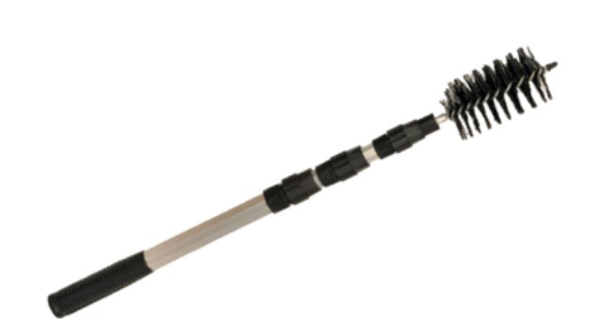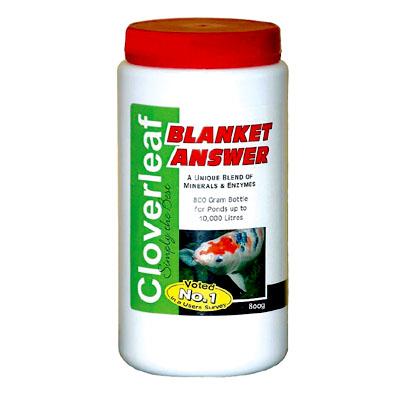Blanketweed: How To Keep It At Bay
.jpg)
Blanket Weed is one of the most common Pondkeeper problems, and unfortunately the cause is not always clear. If left untreated, extreme cases can reduce oxygen levels for fish. We’ve pulled together this trouble shooting list to help you keep your pond crystal clear this summer.
New Ponds and Sunny Ponds
If you are preparing to build a new pond and planning to fill it with tap water, try to use rainwater instead. Collecting sufficient amounts of rainwater is not always practical, but this could prevent problems in the future. Rainwater does not attract algae problems in the same way that tap water does.
Try to avoid building your pond in an area exposed to full sunlight all day, as this can fuel algae growth. Also, avoid having trees nearby as leaves and debris need to be skimmed from your pond regularly as they can lead to algae problems. If your pond is receiving more sunlight than expected, then adding water lilies to your pond (so they cover 50 % of the ponds surface) will create the shade you need.
Test Your Pond (Useful Blogs: Water Quality)
Testing your water quality regularly will help to detect any spikes in nitrate levels. A high nitrate level can cause algae blooms. Excessive organic debris and fish waste can cause nitrate levels to rise. Healthy pond plants can help absorb excess nitrate, so the addition of new pond plants may help if you are experiencing this problem regularly.
These chemicals can also get into your pond if you have used garden compost to pot your pond plants, instead of aquatic soil. Or from garden fertilizers running off into your pond.
Removing Debris (Useful Blogs: Pond Sludge)
Excessive nutrients from decaying debris, fish waste and fallen leaves can contribute to Blanketweed. You should regularly skim the surface of your pond for debris during summer, and use a cover net during autumn to avoid a build up of debris and sludge. Vacuuming the bottom of your pond regularly is a great way to deal with the build-up of sludge. There are also sludge busting treatments that will help.
Try to limit how much you feed your fish, but increase the number of times you feed them. This will help you identify if the food is being eaten; uneaten food is a major cause of chemical spikes (i.e. an increase in Ammonia, Nitrites and Nitrates). We recommend using the PondXpert Swap Net (it includes a skimmer and a blanketweed head) to skim the pond and a feeding ring to keep the food in one place, allowing you to quickly remove leftover food.

There are a great number of treatments you can use to stop blanketweed growing in your pond. Different pond keepers find that different treatments work for them because every pond environment is different. In most cases treatments will need to be ongoing to stop the blanketweed from returning unless you can pin point and eradicate the exact cause.
The first thing to do is to physically remove as much of the blanket weed as possible. This can be done with a blanketweed brush or a piece of wood like a stick. Secondly, treat the water accordingly.
Barley Straw & Barley Straw Flakes: Barley straw (Barley Flakes) are the traditional and natural method to stop blanket weed from growing. It is a preventative method that needs to be added in spring. Simply add the barley straw to your pond and over time it decays; releasing a safe level hydrogen peroxide which prevents algae cells from forming. Your pond should be aerated and exposed to partial sunlight to increase efficiency. It may take 6-8 weeks for the barley straw to become active below 10 °C but only 1- 2 weeks above 20 °C. They work best on the surface of the water (you can anchor them in place to avoid them sinking) and in moving water. It may take between 3-6 months for your barley straw to fully decay and then it should be replaced. Adding barley straw to an algae covered pond during prolonged hot weather may remove oxygen out of the pond.
Quick and Easy Treatments: PondXpert Blanketweed Beaters and Nishikoi Goodbye Blanketweed are both pre-measured treatments that can be dropped into your pond or filter each week.

Liquid Treatments: PondXpert Anti-Blanketweed and Blagdon Barley Straw Extract are liquid treatments that you need to measure and then add to your pond according to the instructions. The advantages of liquid treatments are that you can measure the exact amount of treatment needed for the volume of your pond and once the treatment has been added it mixes with your water. PondXpert Barley Straw Extract and the PondXpert ‘Throw ‘n Go’ Barley Balls are liquid Barley Straw treatments.
Powdered Treatment: PondXpert Blanketweed Eliminator, Cloverleaf Blanket Answer and Nishikoi Clear Waters can be mixed with a bucket of pond water then poured evenly over the surface of your pond. If Blanketweed is sticking to rocks around the edge of your pond or even on a waterfall, you can pour the mixed solution over the affected edges.
Snails: Ramshorn snails will eat your pond algae alongside any uneaten fish food! They are usually available in shops during the summer, but ensure you introduce only Ramshorn snails as they are particularly good for algae. You can find out more information on Pond Snails here.
If you have any specific questions then please do not hesitate to send us an email at info@pondkeeper.co.uk.